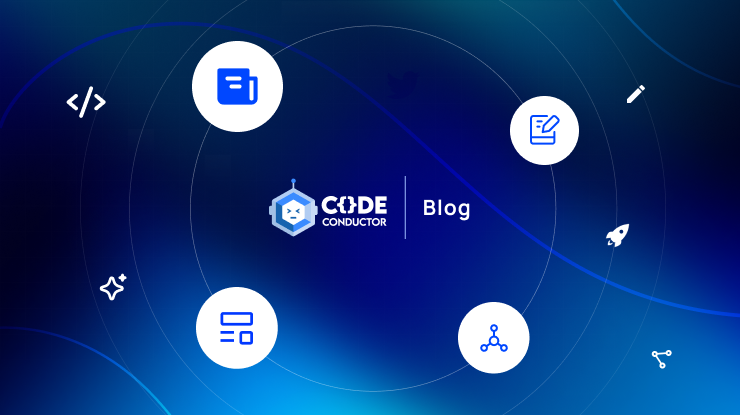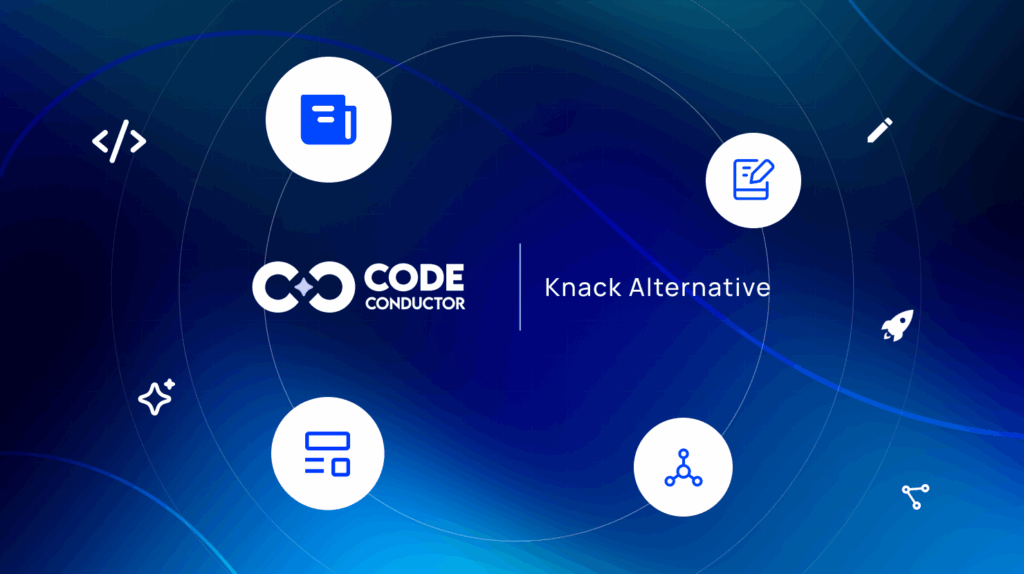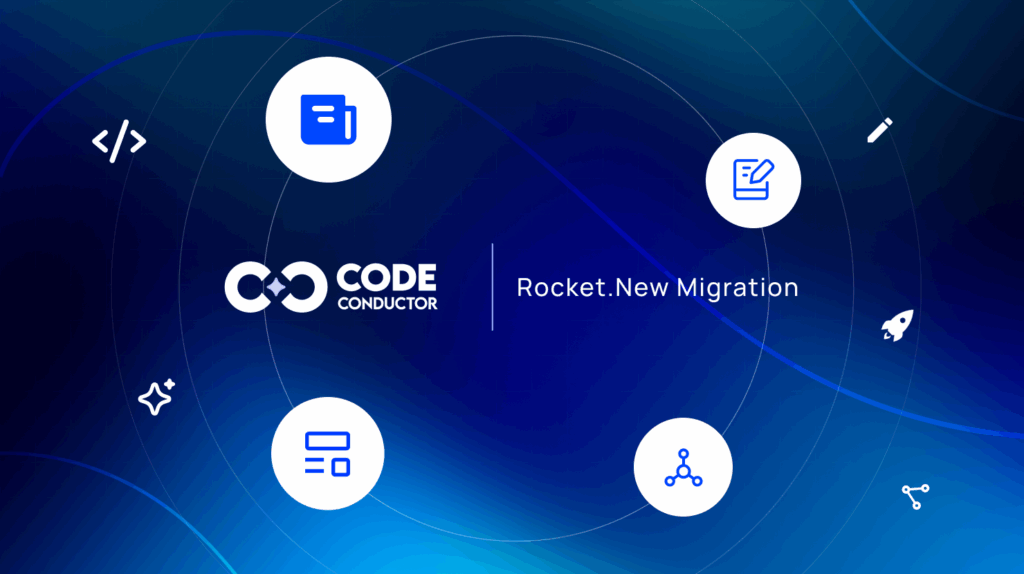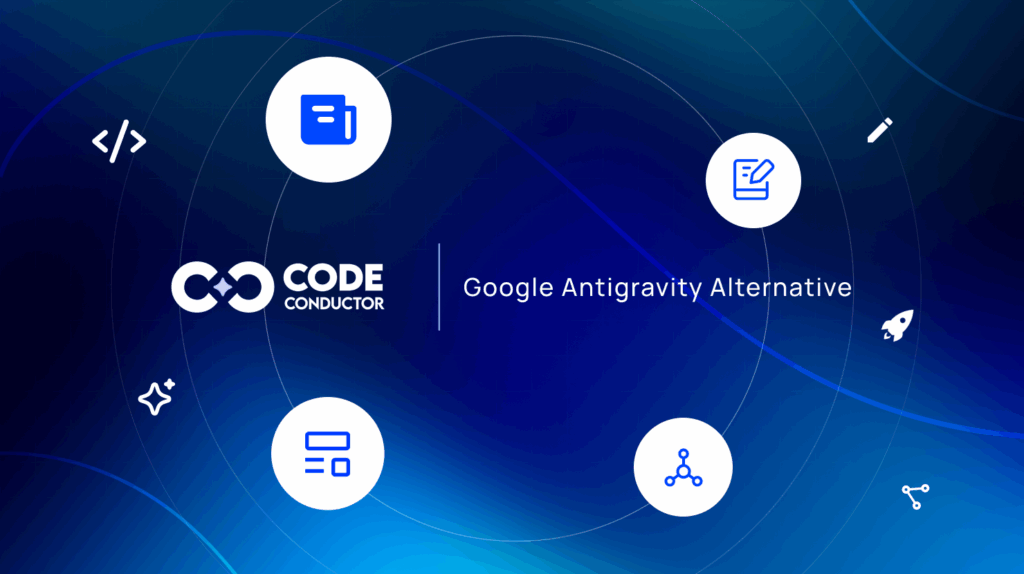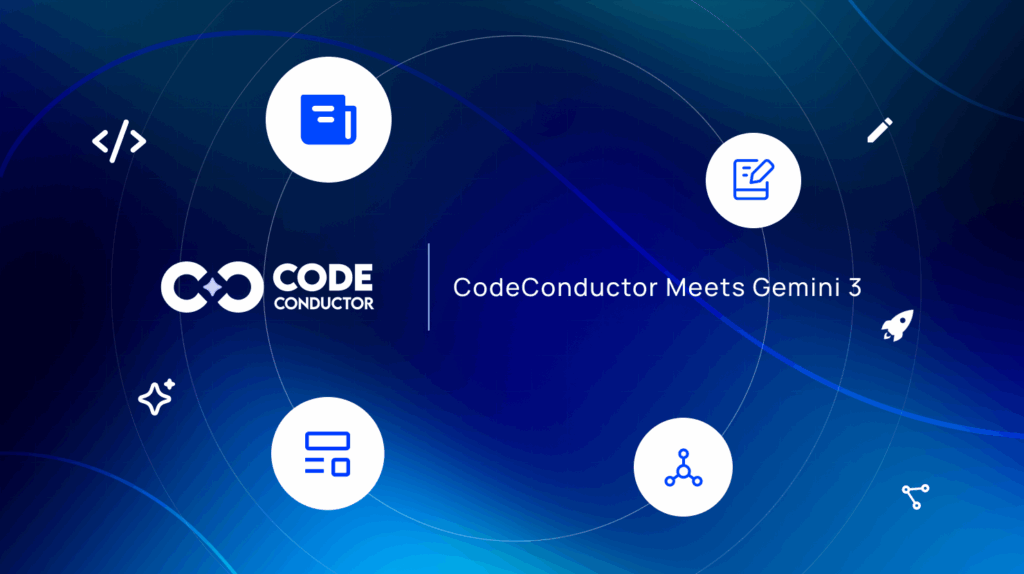In 2023, the global AI market soared to $196.63 billion and is expected to skyrocket with a 37.3% annual growth rate through 2030, according to Grand View Research,Tech giants are leading the charge, pushing AI innovations in sectors like automotive, healthcare, retail, finance, and manufacturing.
But what does this mean for your business? The enterprise AI market is advancing rapidly. A Deloitte survey reveals that 94% of business leaders believe AI is essential for digital transformation and future success. Yet, harnessing this technology’s full potential can be challenging.
In this post, we’ll demystify AI integration, offering you clear, actionable steps to seamlessly incorporate AI into your enterprise software and enhance your business today.
In This Post
- Why Companies Should Embrace AI Integration in Software App Development?
- Step-by-Step Guide to Integrating AI into Your App
- Define your AI goals and expected outcomes
- Identify business processes that will benefit from AI
- Specify required AI capabilities
- Choose the appropriate SDLC model
- Analyze requirements and develop the algorithm
- Design the AI solution
- Plan the AI training and testing methods
- Develop the AI system
- Test the AI system thoroughly
- Deploy, maintain, and continually train the AI application
- How Much Does it Cost to Integrate AI?
- Common AI Integration Challenges & Solutions to Overcome Those
- How CodeConductor Performs AI Integration into Software?
Why Companies Should Embrace AI Integration in Software App Development?
According to McKinsey & Company’s 2023 State of AI Report, a whopping 79% of participants use generative AI, with 22% using it frequently at work. If these numbers don’t convince you, let’s dive into the key benefits of integrating AI into software development for startups.
1. Personalized Offers
Accenture’s Personalization Pulse Check reveals that 91% of consumers prefer brands that remember them and offer personalized recommendations.
With AI, you can tailor offers and suggestions, making your app more intuitive and responsive to individual preferences and behaviors. This requires effective data collection and processing.
2. Increase User Engagement and Retention
HubSpot reports that acquiring new customers is five times more expensive than retaining existing ones. Moreover, a 5% increase in customer retention can boost revenue by 25-95%. AI-driven personalization enhances engagement and satisfaction, leading to higher conversion rates and improved user retention.
3. Process Optimization and Automation
One of AI’s biggest advantages is automating routine tasks. From customer service chatbots to content recommendations, AI streamlines operations.
For example, Uptech’s project Hamlet uses OpenAI’s DaVinci Summarizer to efficiently extract key information from large documents, saving users time and effort. Automation reduces errors and frees up staff for more complex tasks.
4. Data Insights
AI excels at analyzing large datasets to uncover trends and insights invisible to the human eye. These insights can inform strategies, improve decision-making, and identify new growth opportunities.
DeepMind’s AlphaFold is a prime example, solving the protein-folding puzzle and showcasing AI’s ability to reveal complex insights beyond human capabilities.
5. Cost Reduction
AI in product maintenance and support can significantly cut costs. It optimizes resource usage, predicts breakdowns to avoid hefty repair bills, and improves energy efficiency.
Real-time language translation and accurate image and voice recognition are additional benefits that save time and money.
These are just a few perks of integrating AI into your apps. Now, let’s move on to the step-by-step guide on how to incorporate AI into your app development process.
Step-by-Step Guide to Integrating AI into Your App
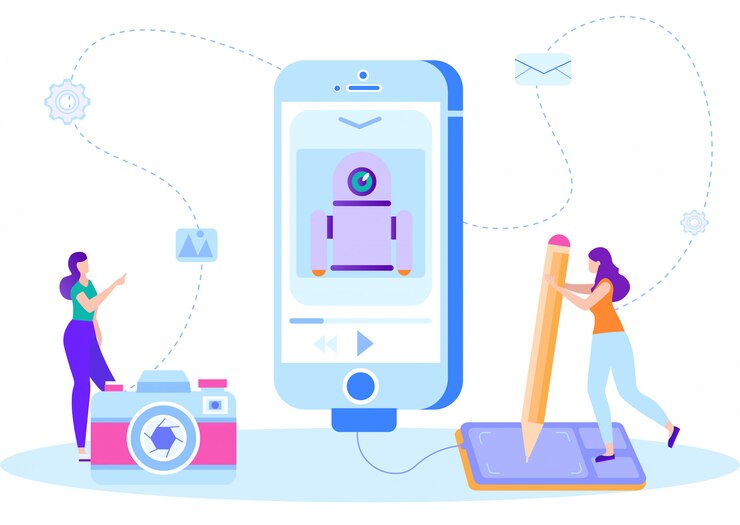
Integrating AI into your application can revolutionize the way it operates, providing enhanced user experiences, automating tedious tasks, and uncovering valuable insights from data.
This step-by-step guide outlines the comprehensive process to successfully implement AI into your app, ensuring each phase is clearly understood and executed efficiently.
-
Define your AI goals and expected outcomes
Before diving into the technical aspects, it’s crucial to establish clear goals and expected outcomes for your AI project. This involves understanding the specific problems you want AI to solve and the benefits you aim to achieve.
Are you looking to personalize user experiences, automate customer service, or gain deeper insights through data analysis? Defining these objectives will provide a clear direction for your project and help in measuring success.
Start by answering questions like:
- What are the primary challenges in your current system?
- How can AI address these challenges?
- What are the short-term and long-term benefits you expect from AI integration?
Documented goals will guide your project from the planning stages through to implementation and optimization.
-
Identify business processes that will benefit from AI
To maximize the impact of AI, identify the specific business processes that will benefit the most from AI integration. This involves analyzing your current workflows and pinpointing areas where AI can introduce efficiencies, enhance performance, or reduce costs.
Common areas include customer service automation, predictive maintenance, personalized marketing, and data-driven decision-making.
Conduct a detailed assessment to:
- Map out existing processes and sub-processes.
- Identify bottlenecks and inefficiencies.
- Evaluate how AI can streamline operations or enhance outcomes in these areas.
This step ensures that AI is applied strategically, targeting the most critical aspects of your business for improvement.
-
Specify required AI capabilities
Understanding the specific AI capabilities you need is crucial to selecting the right tools and technologies
Determine whether you require natural language processing (NLP), computer vision, predictive analytics, machine learning, or other AI functionalities. Each capability serves different purposes and offers unique benefits.
Consider the following:
- What type of data will your AI need to process (text, images, video, etc.)?
- What specific tasks do you want AI to perform (classification, prediction, recommendation, etc.)?
- Are there existing AI models or technologies that can be leveraged, or do you need custom solutions?
Clearly defining these capabilities will help in choosing the right AI components and frameworks.
-
Choose the appropriate SDLC model
Selecting the right Software Development Life Cycle (SDLC) model is critical for managing the AI integration process effectively. The Agile model is often favored for AI projects due to its flexibility and iterative approach, which allows for continuous improvement and adaptation.
However, depending on your project’s scope and requirements, other models like DevOps or waterfall model in software engineering might be suitable.
When choosing an SDLC model, consider:
- The complexity and scale of the AI integration.
- The need for iterative development and frequent testing.
- Collaboration requirements between data scientists, developers, and stakeholders.
The right SDLC model will provide a structured framework for your project, ensuring smooth progression from planning to deployment.
-
Analyze requirements and develop the algorithm
A thorough analysis of requirements is essential for developing effective AI algorithms. This involves gathering data, defining performance metrics, and understanding the specific needs of your application.
Collaborate closely with data scientists to develop algorithms that are tailored to your objectives.
Key steps include:
- Collecting and preparing relevant datasets.
- Defining clear performance metrics and success criteria.
- Developing and iterating on algorithms to optimize performance.
This phase is crucial for building a solid foundation for your AI solution, ensuring it meets the defined goals and requirements.
-
Design the AI solution
Designing the AI solution involves creating a comprehensive architecture that integrates AI seamlessly into your existing systems.
This includes setting up data pipelines, defining model training processes, and establishing deployment infrastructure.
Focus on creating a modular and flexible design that can adapt to future changes and enhancements.
Design considerations should include:
- Scalability to handle growing data and user demands.
- Modularity to allow for easy updates and improvements.
- Integration points with existing systems and workflows.
A well-designed AI solution will ensure smooth implementation and future scalability.
-
Plan the AI training and testing methods
Effective training and testing are critical for building reliable AI models. Outline a comprehensive strategy for collecting and preparing datasets, selecting training methodologies, and establishing testing protocols.
A continuous learning and improvement approach should be incorporated into this plan.
Consider the following steps:
- Collecting diverse and representative datasets for training.
- Choosing appropriate training techniques (supervised, unsupervised, reinforcement learning).
- Establishing validation steps to test models against real-world scenarios.
Rigorous training and testing ensure your AI system performs well in various conditions and continues to improve over time.
-
Develop the AI system
With a solid plan in place, begin the development process by coding the AI models and integrating them into your application. Utilize frameworks and tools such as TensorFlow, PyTorch, or custom-built solutions.
Close collaboration between developers and data scientists is essential for fine-tuning the AI models and ensuring seamless integration.
Development steps include:
- Implementing AI algorithms and models.
- Integrating AI components into the application’s architecture.
- Ensuring compatibility and smooth interaction with existing systems.
This phase transforms your plans and designs into a functional AI system ready for testing.
-
Test the AI system thoroughly
Rigorous testing is crucial to ensure your AI system performs as expected. Conduct various tests, including unit tests, integration tests, and user acceptance tests.
Simulate real-world conditions to identify potential issues and refine the AI models.
Testing steps include:
- Conducting unit tests to check individual components.
- Performing integration tests to ensure all parts work together seamlessly.
- Carrying out user acceptance tests to validate performance in real-world scenarios.
Thorough testing identifies and resolves issues, ensuring a reliable and effective AI solution.
-
Deploy, maintain, and continually train the AI application
After successful testing, deploy your AI application. Continuous monitoring and feedback collection are essential for maintaining performance and identifying areas for improvement.
Implement a maintenance plan that includes regular updates and retraining of AI models to adapt to new data and changing conditions.
Deployment and maintenance steps include:
- Monitoring performance and collecting user feedback.
- Implementing regular updates and improvements.
- Retraining AI models with new data to enhance accuracy and effectiveness.
Ongoing maintenance and training ensure your AI application remains relevant, effective, and aligned with business objectives.
How Much Does it Cost to Integrate AI?
The cost of integrating AI into your app can vary widely depending on several factors, including complexity, features, platform, required resources, and development time. For instance, developing a basic AI personal assistant can cost between $40,000 and $100,000. However, integrating advanced AI technologies with multiple features can drive the cost up to $500,000 or more.
Here’s a detailed breakdown of the factors influencing AI development costs:
1. Complexity
The more complex the AI features and algorithms required, the higher the development cost. Complex tasks like predictive analytics or deep learning models demand more resources and expertise, increasing the overall expense.
2. Functionalities
The number and intricacy of features significantly impact the cost. Advanced functionalities such as computer vision, natural language processing, or real-time data processing add to the complexity and cost of the project.
3. Data Availability
The availability and quality of training data are crucial. Collecting, cleaning, and labeling large datasets can be time-consuming and costly, but they are essential for training effective AI models.
4. Development Time
Longer development cycles increase costs. Developing, testing, and fine-tuning AI models is labor-intensive.
The more time and effort required, the higher the costs.
5. Platform and Technologies
The choice of platforms (mobile, web, etc.) and technologies (cloud services, AI frameworks) also influences costs.
Using cutting-edge AI frameworks or premium cloud services can drive up expenses but might be necessary for achieving desired performance and scalability.
6. Upkeep and Support
Ongoing maintenance, updates, and support are crucial for keeping your AI app functional and up-to-date. These costs should be factored into the overall budget as they ensure the app continues to perform well post-launch.
7. Development Team
The cost is also influenced by the location, expertise, and experience of the development team or AI integration agency.
Teams with specialized skills in AI and machine learning typically charge higher rates but offer greater reliability and quality.
To get an accurate estimate for your AI application development project, it’s important to consider these factors and consult with experts.
Common AI Integration Challenges & Solutions to Overcome Those
The implementation of AI integration can pose a number of challenges. The following are some typical problems with integrating AI in business, along with solutions:
1. Scalability
Challenge: Scaling AI solutions can be complex due to the need for extensive computational resources. As AI models grow and the amount of data they process increases, the computational power required can become a significant bottleneck.
Solution: Utilize cloud-based AI services like AWS, Google Cloud, RedBlink or Microsoft Azure, which offer scalable infrastructure. These platforms allow you to easily adjust computational resources based on your needs, ensuring you can handle increased loads without investing in expensive hardware. Additionally, adopting containerization technologies such as Docker and Kubernetes can help manage and scale your AI workloads more efficiently.
2. High Cost of AI Implementation
Challenge: AI projects can be expensive, requiring significant investment in technology, infrastructure, and talent. The costs can include hardware, software licenses, and the salaries of skilled professionals.
Solution: Start with small, manageable pilot projects that demonstrate the value of AI to stakeholders. This can help secure additional funding for larger initiatives. Leverage open-source AI frameworks like TensorFlow, PyTorch, and Scikit-learn to reduce software costs. Additionally, consider using pre-trained models available through platforms like Hugging Face or leveraging AI as a Service (AIaaS) offerings that provide cost-effective access to advanced AI capabilities.
3. Data Availability and Quality
Challenge: AI relies heavily on high-quality data, which can be difficult to obtain and prepare. Incomplete, inconsistent, or biased data can lead to poor model performance and unreliable outcomes.
Solution: Implement robust data collection processes to gather comprehensive and accurate data. Invest in data cleaning and preprocessing to ensure data quality. Use data augmentation techniques and synthetic data generation to supplement real data, especially when dealing with limited datasets. Tools like Apache Kafka and Hadoop can help manage and process large volumes of data efficiently.
4. Legal Considerations
Challenge: Ensuring compliance with data privacy laws and regulations, such as GDPR or CCPA, can be complex and varies by jurisdiction.
Solution: Stay informed about relevant laws and work with legal experts to ensure compliance. Implement strict data governance practices, including data anonymization, encryption, and secure data storage. Develop clear policies for data use, consent, and retention. Regularly audit your data practices to identify and address any compliance gaps.
5. Integration with Legacy Systems
Challenge: Incorporating AI into existing legacy systems can be technically challenging due to compatibility issues and outdated technology.
Solution: Use middleware and APIs to bridge the gap between AI solutions and legacy systems. This approach allows for smooth data flow and functionality integration without significant changes to existing systems. Gradually phase in AI components to ensure compatibility and minimize disruptions. Consider using microservices architecture to enable more flexible and modular integration.
6. Lack of Tech AI Expertise
Challenge: Finding skilled AI professionals can be difficult, and there may be a shortage of talent with the necessary expertise.
Solution: Invest in training and upskilling your existing team through online courses, workshops, and certifications in AI and machine learning. Platforms like Coursera,Udacity, and edX offer comprehensive AI training programs. Partner with AI Consulting Company or hire freelancers for specialized tasks to fill immediate gaps. Additionally, foster a culture of continuous learning and innovation within your organization to keep up with the rapidly evolving AI landscape.
How CodeConductor Performs AI Integration into Software?
At CodeConductor, we specialize in making AI integration into your software seamless and efficient.
As World’s 1st AI Software Development Platform, we help companies build apps, software, and products with advanced AI capabilities.
How We Do It:
1. Understanding Your Needs: Our first step is to work closely with you to understand your specific goals and requirements. We take the time to learn about your business processes, the challenges you face, and what you hope to achieve with AI integration.
2. Customizing AI Solutions: With a clear understanding of your needs, we tailor AI solutions to fit your unique requirements. Whether you need machine learning models, natural language processing, or computer vision capabilities, we select the right AI components to ensure optimal performance.
3. Using the latest technologies: We use cutting-edge technologies and tools to build robust AI solutions. Our expertise in AI and the latest advancements in the field ensure that your software is equipped with the most powerful and efficient AI capabilities available.
4. Seamless Integration: Our team ensures that integrating AI into your existing systems is smooth and hassle-free. We use advanced integration techniques and tools to ensure compatibility and minimize disruptions to your operations.
5. Testing and Optimization: We rigorously test the AI components to ensure they function as expected and deliver the desired outcomes. Through continuous optimization, we fine-tune the AI models to improve accuracy and efficiency over time.
6. Ongoing Support and Training: After the integration is complete, we provide ongoing support and maintenance to ensure your AI systems continue to perform at their best. We also offer training to your team, helping them understand and leverage the new AI capabilities effectively.
Real-World Application: Our platform has been used to successfully integrate AI into various enterprise software solutions. For example, we’ve helped companies automate routine tasks, personalize user experiences, and gain valuable insights from large datasets. Our projects 5Plus, CPA Pilot are the examples of our AI-powered software development platform that are delivering the real value.
With CodeConductor, integrating AI into your software is no longer a complex and daunting task. With our simple and efficient process, you can harness the power of AI and stay ahead of the competition.
With CodeConductor, you don’t just adopt AI; you partner with experts dedicated to driving innovation and delivering excellence in software development.

Founder CodeConductor

